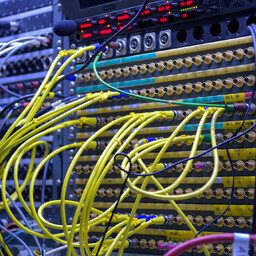Võtame siin täiesti uue lähenemise, et vältida maksumaksja raha väärkasutust," ütles Pakosta kolmapäeval ERR-ile.
Tema poolt kooskõlastusringile saadetud määruse eelnõu näeb ette, et riik ei maksa enam kinni
kaablivedu
suvaliste aadressiobjektideni. Varasemalt on kostnud kriitikat selle kohta, et raha anti internetiettevõtetele ka selle eest, kui kaabel möödus kanakuudist või mahajäetud heinaküünist. Nüüd tahab riik kaablivedajalt saada ka reaalsete liitumislepingute sõlmimist," rõhutas Pakosta.
kaablivedu
Tõlge fraasile: kaablivedu
EN
cable laying
Tema lisas, et varasemates voorudes on olnud juhtumeid, kui reaalseid liitumisi on võrku tehtud ainult veerandilt näidatud aadressidest. Pakosta sõnul võis varasemates toetusejagamise voorudes ollagi võrku ehitanud ettevõtetel huvi, et liitumisi oleks vähem, kuna siis ei peaks nad tagama selle tööpidevust.
Kui seni lähtus riik toetuste andmisel kahest kriteeriumist –
liitumise võimalus
e saavate aadresside arvust ja küsitava toetuse suurusest ühe aadressi kohta – siis uue nõudena arvestatakse ka liituvate aadresside arvu, selgub määruse eelnõust.
liitumise võimalus
Tõlge fraasile: liitumise võimalus
EN
connection opportunity
Seekordses voorus kavatseb riik jätta 30 protsenti toetusest välja maksmata, kui lubatud liitumisi ei tule, selgitas minister. Pakosta rõhutas ka seda, et ühelegi liitujale ei tohi uue meetmega lairibaühenduse saamine maksta rohkem kui 200 eurot.
Aastateks 2025-2029 mõeldud lairiba ehitamise viiendas etapis saavad sideettevõtjad või kohaliku omavalitsuse omandises olevad ettevõtted taotleda toetust tipptunnitingimustel 1 Gbit/s allalaadimiskiirust võimaldava püsiühendusega juurdepääsuvõrgu rajamiseks, kui erainvesteeringute toel ei ole kavas seda kuni 2029. aastani ehitada.
Juurdepääsuvõrk (ehk nn viimane miil) on sidevõrgu osa, mik
We are taking a completely new approach here to prevent the misuse of taxpayer money," Pakosta said on Wednesday to ERR.
The draft regulation sent by her for approval foresees that the state will no longer pay for cable connections to random address objects. Previously, criticism has been voiced that money was given to internet companies even when the cable bypassed a rabbit hutch or an abandoned hay barn. Now the state wants to obtain actual connection agreements from the cable provider," emphasized Pakosta.
She added that in previous rounds there have been cases where real connections were made to only a quarter of the indicated addresses. According to Pakosta, in previous subsidy rounds, companies that built networks may have had an interest in fewer connections because then they wouldn't have to ensure its functionality.
While previously the state based the granting of subsidies on two criteria - the number of addresses that could potentially be connected and the amount of subsidy requested per address - the new requirement will also take into account the number of connected addresses, as stated in the draft regulation.
In this round, the state plans to withhold 30 percent of the subsidy if the promised connections do not materialize, the minister explained. Pakosta also emphasized that under the new measure, obtaining a broadband connection should not cost any subscriber more than 200 euros.
In the fifth stage of broadband construction planned for 2025-2029, telecom companies or companies owned by local governments can apply for support under peak conditions for building an access network with a fixed connection allowing a download speed of 1 Gbit/s, if it is not planned to build it by 2029 with private investment.
The access network (so-called last mile) is the part of the network that extends from the backbone network to the end users, which can be both homes and businesses and institutions. The cable to be built must be operator-neutral - meaning that a person or company can choose whose internet and telecommunication services they will use later.
With this measure, the state plans to create connection opportunities for at least 10,000 addresses. The subsidy will be financed by the European Regional Development Fund with 45 million euros, and the ministry plans to conduct at least three application rounds for its distribution.
Pakosta also emphasized the volume of the current subsidy round - since 2018, the state has supported the construction of access networks in rural areas with a total amount of 51.1 million euros through four different measures.
With the previous four rounds, over 47,000 addresses have gained the possibility of connection, and work is ongoing for about 10,000 addresses. According to a study commissioned by the Ministry of Economic Affairs and Communications last year, there are still over 120,000 addresses in rural Estonia lacking at least a 100 Mbit/s fixed connection. Building fiber connections to these addresses is estimated to cost over 800 million euros.

